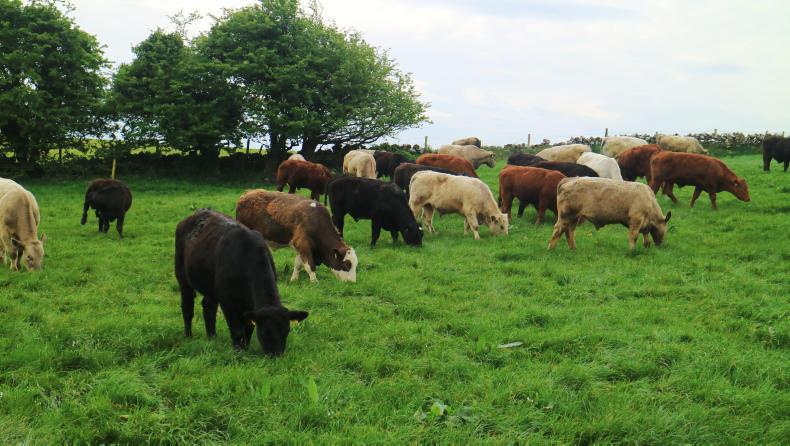The price for Irish R3 steer beef was 6c/kg below the EU average for R3 young bulls during week ending 18 August, while Irish R3 young bull price was 18c/kg below the EU 28 average.
It was the same in the cow trade with the Irish price, which had been the highest in the EU in 2018, now 2c/kg below the EU average.
In what is clearly a weak market across the EU, the Irish factory price is performing worse than the rest when VAT is excluded on R3 grades, according to the weekly price report issued by the European Commission.
Steer/young bull prices
Last week, the average Irish R3 steer price reported was 344c/kg and the R3 young bull price was 332c/kg, worse than the price in any of the main export markets in the EU for Irish beef.
In Britain, the R3 steer price was the equivalent of 361c/kg and 342c/kg equivalent for R3 young bulls. Sweden and Italy jostle for top position on R3 young bull price in the EU at 398c/kg in Sweden and 399c/kg in Italy.
In France, where the price has been on par with Ireland over recent months, the R3 young bull price for last week was 372c/kg. The German, Spanish and Dutch prices for R3 steers had lagged well behind the Irish price in recent months but even these country’s R3 young bull price beats Irish R3 steer prices.
The German R3 young bull price was 354c/kg while the price in the Netherlands was 352c/kg and the Spanish R3 young bull price was 350/kg, the same as the EU average.
Cows
The Irish O3 cow price has been among the most competitive in the EU over recent years but it too dipped below the EU average last week. The Irish price was 284/kg, 2c/kg below the EU average of 286c/kg for O3 cows.
Sweden is also the strongest market in the EU for O3 cows reporting 359c/kg for the week ending 18 August while the French price was 323c/kg.
German O3 cows were making 292c/kg, while the Netherlands came next on 286/kg.
In Britain, the average was the equivalent of 274/kg and the Spanish O3 cow price was 260/kg that week.
While it has been a weak market and there have been processing difficulties in recent weeks, the figures clearly say Irish farmers are getting a worse deal than their counterparts in the EU where most of Ireland’s beef is sold.
In the earlier part of the summer, the beef price may have been poor but it was on par or better than most EU countries but that is no longer the case.
In recent years, it has been a trend for Irish prices to rise above the rest of Europe in the late spring and fall back as the summer progresses.
This year, it is clear that while prices didn’t climb to levels of recent years, they have most definitely fallen back.






 This is a subscriber-only article
This is a subscriber-only article










SHARING OPTIONS: